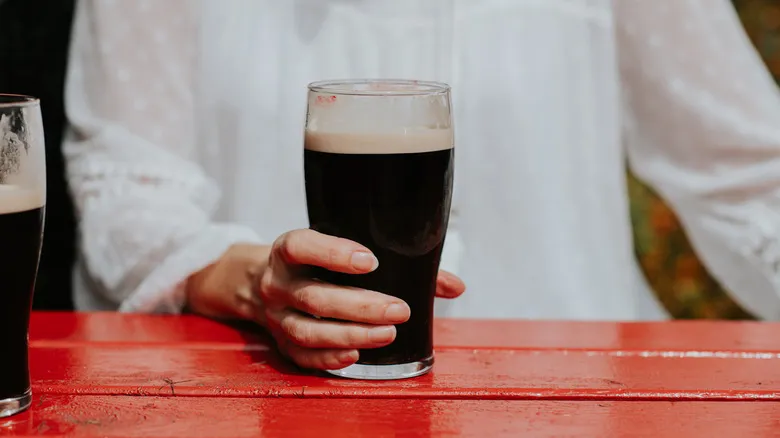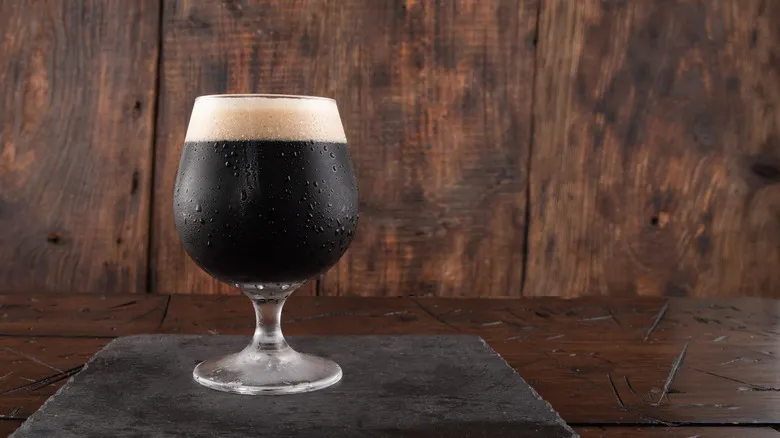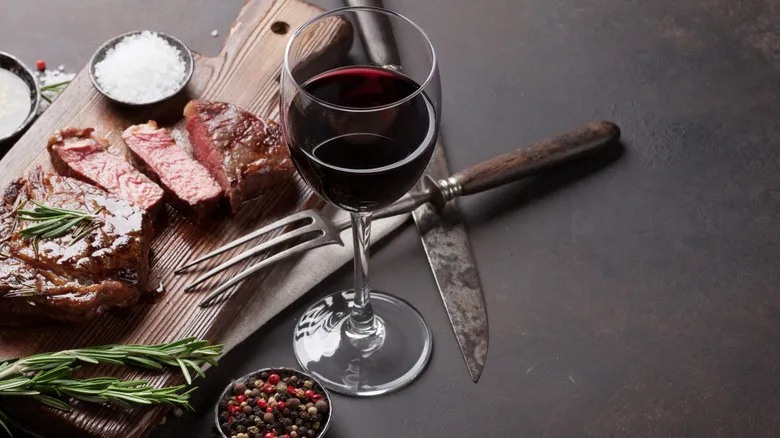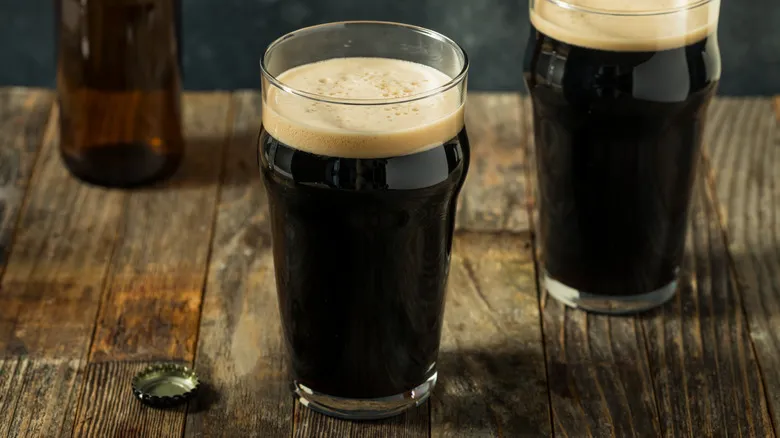The color and flavor range of stouts

When it comes to stouts and imperial stouts, the first thing that stands out is their color. While we typically associate brews with shades like amber, pale tan, and translucent yellow, the striking inky black of a stout is sure to grab attention. Stouts can vary from a rich reddish-brown to deep black, with imperial stouts usually being the darkest of the bunch.
The dark hues of brown and black evoke thoughts of chocolate and coffee, and these flavors are commonly found in many stouts. However, the flavor profile for this dark beer is quite diverse, offering notes such as nuts, toast, marshmallows, malt, dried fruit, spices, licorice, vanilla, smoke, and even leather. Some stouts may also feature more pronounced hoppy characteristics, depending on their style. Imperial stouts, with their extended brewing process, often present a more robust, aged flavor that can be reminiscent of wine. Stouts can range from sweet to dry, with some exhibiting a bitter quality, and they are often labeled accordingly.
Stouts: A beer with English origins

If your thoughts drift to Ireland while enjoying a creamy stout, you're spot on. Stouts encompass several distinct styles, including American, English, and Irish.
Irish stouts are generally drier, featuring roasted and toasted flavors with a lower alcohol content. The most famous example is Guinness, particularly its Guinness Draught, which has a relatively modest alcohol level of 4.2%. English stouts are quite similar to their Irish counterparts but often incorporate more hops and a higher alcohol content. American stouts, on the other hand, are characterized by a significant hop presence, resulting in a more bitter taste; in contrast, the hops in Irish stouts are usually subtle and overshadowed by other flavor notes.
While stouts are often linked to Ireland, their roots trace back to England. They evolved from the once-popular porter in the 1700s. The key distinction between stouts and porters lies in the type of barley used and the beer's strength: porters are made with malted barley, whereas stouts utilize unmalted, roasted barley. Essentially, porters are lighter versions of stouts, and as the demand for a bolder flavor and higher alcohol content grew in 18th-century England, the stout emerged.
Imperial stout: a beer for the royal Russian court

If you've ever encountered a beer labeled as a "Russian imperial stout," that's actually its full designation. This can be a bit misleading: imperial stouts do not originate from Russia; they were first developed in England, just like the original stout mentioned earlier. These beers were crafted in England with the goal of exporting them to the Baltic Sea regions, where a richer flavor and higher alcohol content were favored in the colder climate. The term "Russian" was added because these stouts gained popularity among the royal court of Czarina Catherine the Great. The higher alcohol by volume (ABV) and the extra hops also helped preserve the beer during its journey across the sea.
While the Russian imperial stout is the original strong, aged stout, there is also an American imperial stout. Russian imperial stouts typically have a more traditional, straightforward flavor, whereas the American version often experiments with various flavors, incorporating ingredients like vanilla, chocolate, coffee, or even being barrel-aged. Both styles are brewed for a longer duration than the average stout, usually ranging from 8-12% ABV.
In general, imperial stouts are among the darkest and strongest beers available. They often come with a higher price tag as well, due to the extended brewing time, aging process, and the use of specialty ingredients.
Flavor variations to stouts

Beyond the traditional American or Irish stouts, as well as Russian or American imperial stouts, there exists a wide array of variations distinguished by their flavors and unique specialty ingredients. While the foundational recipe remains consistent, brewers introduce new elements during the brewing process to impart distinct flavor profiles. These added flavors and ingredients do not determine whether a beer is classified as an imperial stout or a regular stout; both types can adopt new tastes while still fitting within their respective categories, which, as previously mentioned, are defined by the beer's strength and the duration of the brewing process.
Two rich styles of stouts are milk stouts and oatmeal stouts. Milk stouts incorporate lactose, while oatmeal stouts include oats. Pastry stouts often feature sweet ingredients and flavorings such as ice cream, candied nuts, or candy canes—essentially any sweet indulgence you can imagine. For a more adventurous experience, consider the intriguing oyster stout, which incorporates oyster shells during brewing to add a hint of saltiness that enhances the beer's sweet notes.
For an extra boozy kick, stouts can also be aged in barrels that previously held whiskey, brandy, rum, or even wine and sherry. This aging process accomplishes two things: it allows the beer to absorb flavors from the barrel's previous contents, and depending on the aging duration, it can also elevate the alcohol content.
Drinking stouts and imperial stouts

Both varieties of stouts are known for their robust character, making them ideal for cooler weather or cozying up by the fireplace, especially during the holiday season. A standard stout, with its lower alcohol content, is more "sessionable" compared to imperial stouts. On the other hand, imperial stouts, with their higher alcohol content and bolder flavors, are best enjoyed later in the day. Some of these strong brews can reach up to 14% alcohol, so it's wise to drink them with caution. Both styles are often served in goblets, like the ones shown here.
The rich flavors of these stouts lend themselves to intriguing pairings, both sweet and savory. Salty snacks like peanuts and pretzels complement dry Irish stouts perfectly. Other savory options, such as grilled meats, crispy mushrooms, burgers, and sharp cheddar, also pair well with the dark brew. Surprisingly, oysters can be enjoyed with a creamier stout, creating a delightful blend of sweet and briny flavors.
Stouts labeled as "pastry stout" or "dessert stout" are excellent choices for an after-dinner drink alongside a sweet treat, as they tend to be sweeter and feature flavors like s'mores and peppermint. Additionally, stout beer can be incorporated into desserts. Consider trying an ice cream float made with dark beer or using it to bake a rich chocolate cake.
Recommended

Chill Your Wine In An Instant With One Salty Hack

The Science Behind Why Beef And Red Wine Are A Perfect Pairing

How To Pour A Beer - You're Doing It Wrong All Wrong

How Long Does White Wine Last In The Fridge Once Opened?
Next up

